When you start learning Korean, one of the most important steps of the journey will be to learn the Korean language alphabet. And I shall guide you through to the Korean language alphabet A to Z today!
The Korean Alphabet’s History
The Korean language alphabet is a very well-thought-out system called “Hangul” 한글 (hangeul).
For a bit of a history touch to this article and if you’re interested, the Korean language system (hangul) was invented in 1443 by King Sejong the Great. Back then, the people of Korea used Hanja, a writing system made up of traditional Chinese characters. For many lower-class Koreans, it was difficult to read it and it caused the education to be hard to access, and a lot of Korean people couldn’t read.
King Sejong believed in the importance of his people and the importance of making it possible for them to get access to literacy and invented Hangul. In the beginning, the Korean alphabet wasn’t named “Hangul” but “Hunminjeongeum”, which means “the correct sounds to instruct the people”. It was only later (in 1912) that the alphabet was named Hangul (great script).
Why Learn the Korean Alphabet?
And before we start, you might wonder: “Why should I learn the Korean alphabet when I can just rely on romanization?”
I know a lot of people tend to rely on Romanization, and even though I can understand it makes it easier at the beginning, relying on Romanization will only slow you down. But if you want to learn Korean basics through Romanization because you only want to travel there once or twice, check out this article.
The best advice that any advanced Korean learner would give a beginner Korean learner would be to learn Hangul and not to rely on its romanization. The Korean alphabet is way more precise and accurate, and you won’t have any pronunciation problems if you focus on the Korean alphabet rather than learning pronunciation from Romanization.
Just think of it as a game, you’re learning an alphabet that only the people who have the same interests as you will be able to read. When I was a child, I created my alphabet to be able to write secret messages to my close friends. (but maybe that’s just me)
Hangul – The Korean Alphabet
Hangul is made of 14 consonants (ㄱ ㄴ ㄷ ㄹ ㅁ ㅂ ㅅ ㅇ ㅈ ㅊ ㅋ ㅌ ㅍ ㅎ) and 10 vowels (ㅏ ㅑ ㅓ ㅕ ㅗ ㅛ ㅜ ㅠ ㅡ ㅣ), making it an alphabet of 24 characters.
There are also 19 complex letters made of a combination of simple consonants (ㄲ ㄸ ㅃ ㅉ ) and vowels (ㅢ ㅚ ㅐ ㅟ ㅔ ㅒ ㅖ ㅘ ㅝ ㅙ ㅞ) that you can add to this. But essentially, you have 24 characters and 19 extra combinations of those characters.
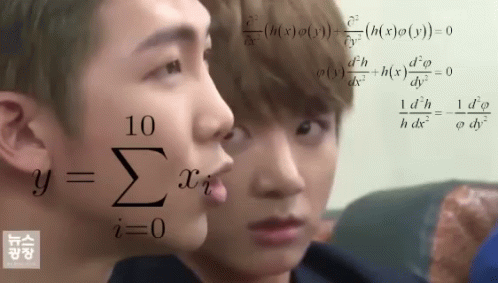
In this article, we’ll cover the Korean language alphabet A to Z, or well, ㄱ to ㅎ.
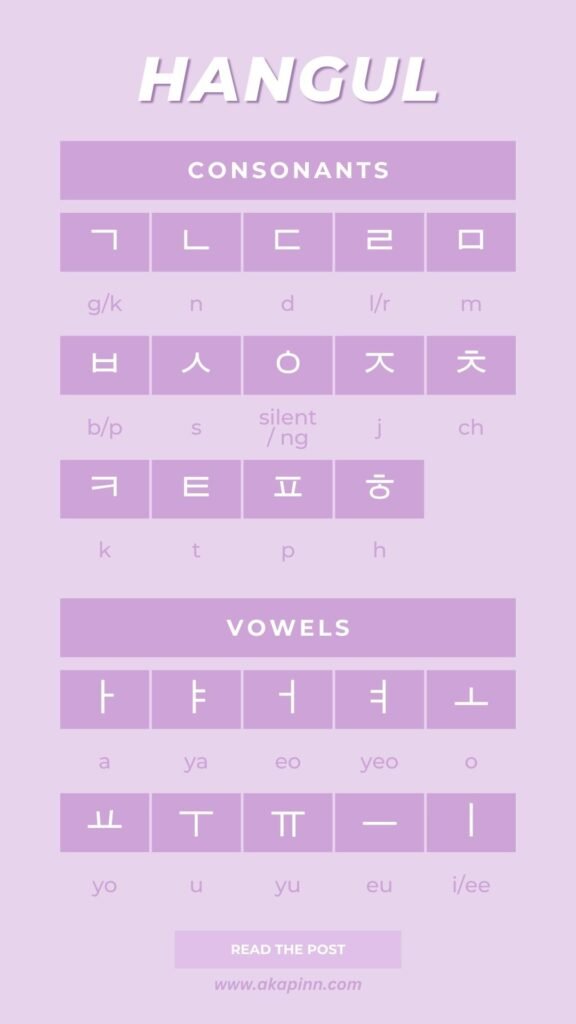
The Korean Alphabet Consonants
As said previously, the Korean alphabet is composed of 14 consonants, called “자음” (jaeum).
There are also an additional 5 Korean double consonants, made of simple consonants. The sound of each consonant is unique and changes according to its position in the syllable. Whether the consonant is at the beginning of the Korean character or its end, the pronunciation can change.
Simple consonants :
ㄱ (g/k), ㄴ (n), ㄷ (d), ㄹ (l), ㅁ (m), ㅂ(b/p), ㅅ(s), ㅇ (ng), ㅈ (j), ㅊ(ch), ㅋ (k), ㅌ (t), ㅍ (p) and ㅎ (h).
Here is a table that will help you get the pronunciation of the consonants right :
| Hangul | Initinal consonant | Final consonant |
|---|---|---|
| ㄱ | G in gun | K as in book |
| ㄴ | N in no | N as in no |
| ㄷ | D in dog | T as in hat |
| ㄹ | A sound between L and R (between love and ride) | A sound between L and R (between love and ride) |
| ㅁ | M in man | M as in man |
| ㅂ | B in bed | P as in tap |
| ㅅ | S in see, SH in shoe | T as in hat |
| ㅇ | No sound | Ng as in song |
| ㅈ | J in jar | T as in hat |
| ㅊ | Ch in chat | T as in hat |
| ㅋ | K in kite | K as in book |
| ㅌ | T in top | T as in hat |
| ㅍ | P in power | P as in tap |
| ㅎ | H in heat | Silent or marking the next consonant aspirated |
Double consonants
ㄲ (kk), ㄸ (dd), ㅃ (bb), ㅆ (ss) and ㅉ (jj)
The sound of the double consonants is similar to their simple equivalents. The only thing that changes (and it makes quite a big difference) is the tension when you pronounce them.
In the beginning, it might be hard to identify and reproduce, but I recommend you to search on YouTube for native Korean people’s pronunciation of these to learn it. For now, knowing that the sound is similar but not entirely the same can be enough.
The Korean Alphabet Vowels
The Korean language alphabet is made of 10 consonants, called “모음” (moeum)
And just like for the consonants, there are also an additional 11 Korean complex vowels, made of simple vowels.
Base vowels
The base vowels of Hangul are :
ㅗ(o), ㅓ(eo), ㅜ(u), ㅏ(a), ㅛ(yo), ㅕ(yeo), ㅠ(yu),ㅑ(ya, ㅡ(eu),ㅣ(i)
| Hangul | Sound |
| ㅗ | O as in « no » |
| ㅓ | Sound similar to « uh » |
| ㅜ | Ou as in « you » |
| ㅏ | A as in « father » |
| ㅛ | Yo as in « yoga » |
| ㅕ | Y sound of « you » + « uh » |
| ㅠ | Yu as in « you » |
| ㅑ | Ya as in « yarn » |
| ㅡ | No sound similar in English. To pronounce it, try to pronounce « ㅜ » without pouting. Your lips must stay horizontal, and your teeth touching. |
| ㅣ | I as in « see » |
Complex vowels
In addition to these, we find 11 more complex vowels, made of combinations of the base vowels we’ve just seen.
They are : ㅐ, ㅔ, ㅒ, ㅖ, ㅘ, ㅝ, ㅙ, ㅞ, ㅟ, ㅚ, ㅢ
ㅐ
ㅐ is made of the combination of ㅏ and ㅣ=> ㅐ= ㅏ +ㅣ
ㅒ
ㅒ is made of the combination of ㅑ and ㅣ=> ㅒ = ㅑ + ㅣ
ㅔ
ㅔ is made of the combination of ㅓ and ㅣ=> ㅔ = ㅓ + ㅣ
ㅖ
ㅖ is made of the combination of ㅕ and ㅣ=> ㅖ = ㅕ + ㅣ
ㅘ
ㅘ is made of the combination of ㅗ and ㅣ=> ㅘ = ㅗ + ㅏ
ㅝ
ㅝis made of the combination of ㅜ and ㅓ=> ㅝ = ㅜ + ㅓ
ㅙ
ㅙ is made of the combination of ㅗ and ㅐ=> ㅙ = ㅗ + ㅐ
ㅞ
ㅞ is made of the combination of ㅜ and ㅔ=> ㅞ = ㅜ + ㅔ
ㅟ
ㅟ is made of the combination of ㅜ and ㅣ=> ㅟ = ㅜ +ㅣ
ㅢ
ㅢ is made of the combination of ㅡ and ㅣ=> ㅢ = ㅡ + ㅣ
ㅚ
ㅚ is made of the combination of ㅗ and ㅣ=> ㅚ = ㅗ + ㅣ
| Hangul | Sound |
| ㅐ | A in « babe » |
| ㅒ | Ye as in « yeah » |
| ㅔ | E as in « bed » |
| ㅖ | Ye as in « yes » |
| ㅘ | Wa as in « water » |
| ㅙ | We as in “wet” |
| ㅚ | We as in “wet” |
| ㅝ | Wo as in “world” |
| ㅞ | We as in « wet » |
| ㅟ | We as in « we » |
| ㅢ | Same as ㅡ + i |
The Syllables – How Hangul is Written
Hangul is written in syllabic blocks, which means that you won’t just write the characters from left to right in a straight line as you would do in English. In Korean, the characters fit together to form a syllable.
There are two rules that you can keep in mind when you start forming syllables and you don’t feel sure:
– A Korean syllable will always start with a consonant(simple or double)
– There are at least two characters per syllable. For example, you can’t just write ㅏ(a) on its own, you need ㅇ (nieung, silent in initial position) to form 아.
– There are a maximum of 4 characters per syllable (4 characters: 봖 made of the consonant ㅂ, the complex vowel ㅘ, the consonant ㄴ and the consonant ㅎ).
The most simple Korean syllables are made of two characters, but it can get more complicated. If at the beginning, you’re struggling to get it right: it’s perfectly normal! It takes some time to get used to. If you’re not sure about your syllable, I would recommend you download the Korean keyboard on your phone/tablet/computer and try writing the syllable you’re thinking about. The Korean keyboard won’t get wrong!
Here are the combinations possible for the syllables.
C = Consonant / V = Vowel

As you can see, there are various ways to write, and sometimes it can get messy. For instance, if we think about the vowels, it can be confusing: do I need to write it under or beside the consonant?
The position of the vowel will be dictated by its nature, whether they are “vertical vowels” or “horizontal vowels”. You can easily identify them thanks to their shape.
Vertical vowels:
ㅏ ㅣ ㅓ ㅑ ㅕ ㅔ ㅐㅒ ㅖ
Horizontal vowels :
ㅡ ㅜ ㅗ ㅠ ㅛ
The Stroke Order When You Write Hangul
In addition to everything we’ve seen, it’s also important to note that each character has its stroke order that is supposed to be followed and respected. With time, many people tend not to respect it fully, but I would recommend you to start by learning it and following it.
Native Koreans also learn it at school and keep writing this way throughout their life, even though, for some characters specifically, it tends to vary.
Check out the Korean Handwriting ebook in the shop if you want to learn the character’s stroke order, as well as how to write more naturally in Korean.
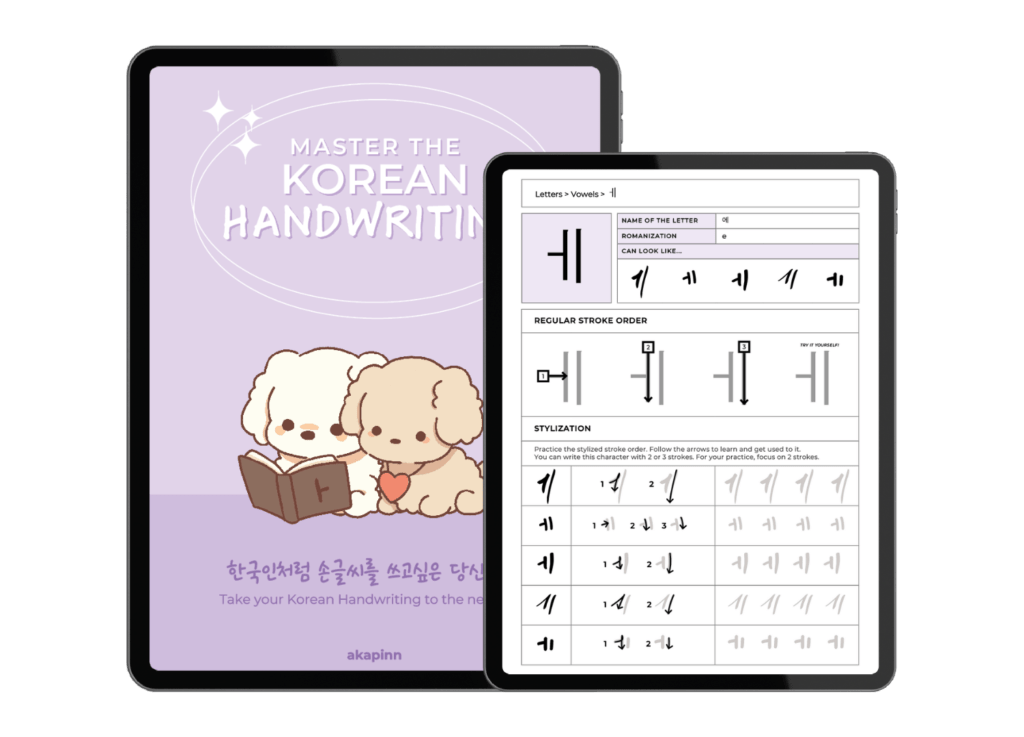
The Korean Alphabet in English
It’s important to note that the pronunciation of the alphabet in English and the pronunciation of the Korean alphabet (Hangul) are different. Some letters are very similar and pairing the Korean alphabet with the English alphabet might help you remember better.
But some Korean characters aren’t pronounced the same according to their position in a syllable. Please keep that in mind and take this list with a grain of salt! It is only there to roughly guide you.
Some Koreans aren’t listed below simply because the list gives giving approximation of the English alphabet to the Korean alphabet. Some Korean characters don’t have any English letter to pair with, because the sounds are just too different.
| English | Korean |
|---|---|
| A in English would be… | ㅏ in Korean. |
| B | ㅂ |
| C | ㅋ |
| D | ㄷ |
| E | ㅔ |
| F | ㅍ |
| G | ㄱ |
| H | ㅎ |
| I | ㅣ |
| J | ㅈ |
| K | ㄱ ㅋ |
| L | ㄹ |
| M | ㅁ |
| N | ㄴ |
| O | ㅗ |
| P | ㅂ ㅍ |
| Q | ㅋ |
| R | ㄹ |
| S | ㅅ |
| T | ㅌ |
| U | ㅜ |
| V | ㅂ |
| W | ㅝ ㅟ |
| X | ㅈ |
| Y | ㅖ ㅒ |
| Z | ㅈ |
Wrap up
And there you go!
You have a solid foundation to go on with your study of Korean. You can check the steps to learn Korean for a beginner if you’re not sure about what to do after learning Hangul.
Of course, you shouldn’t rely on this article alone to learn the Korean alphabet, but I believe it will give you a decent introduction to it.
If you want to learn Hangul while having fun, you can also watch this video :
Happy learning! ♡


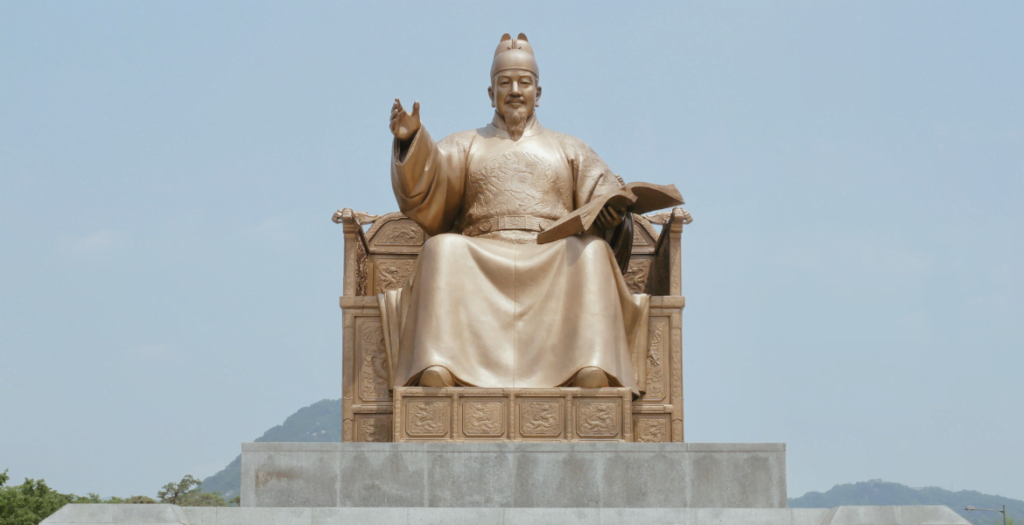
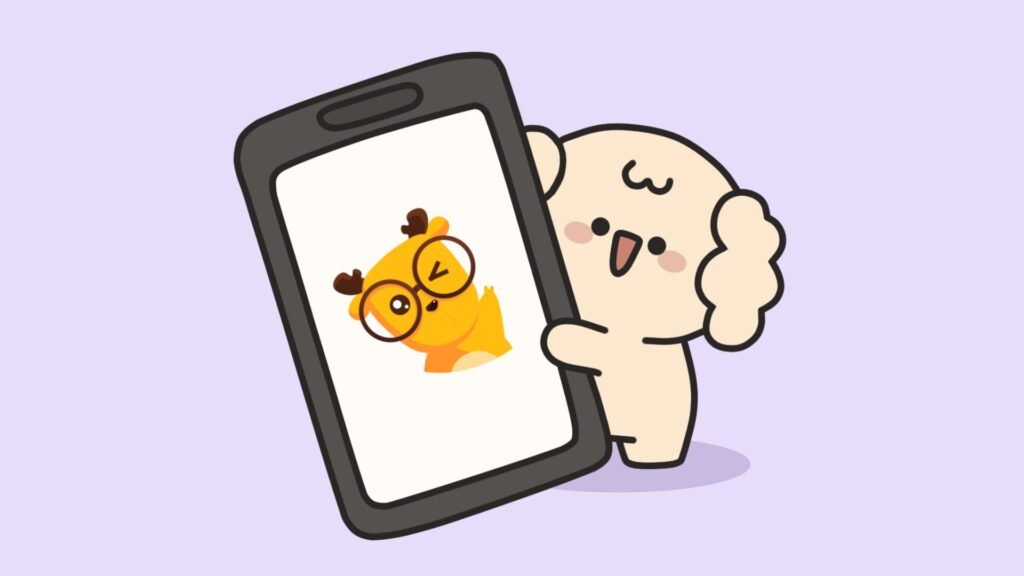

Very interesting
I really like it
I really really love it .it so amazing